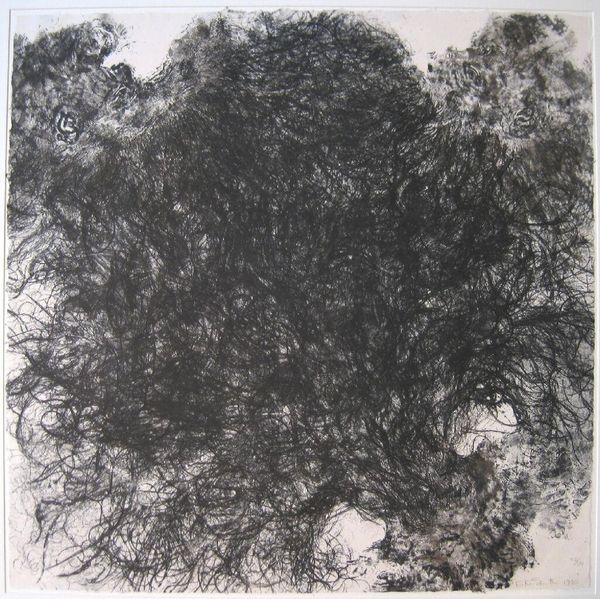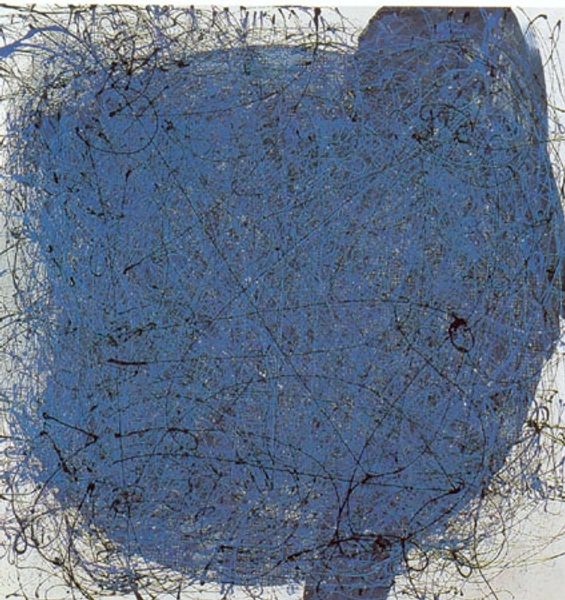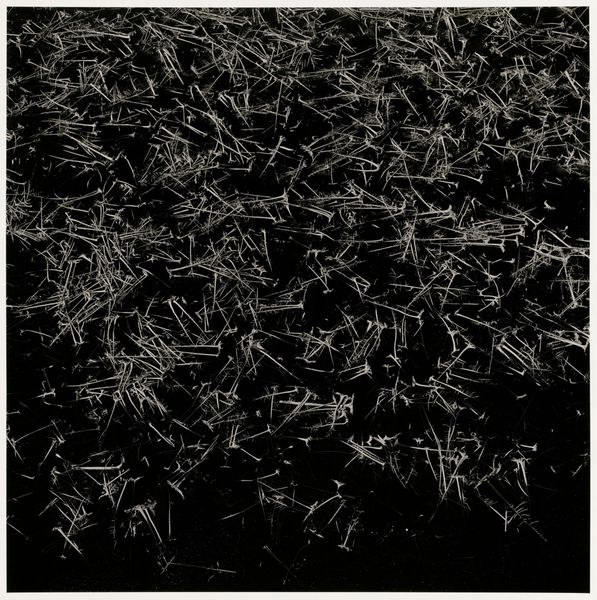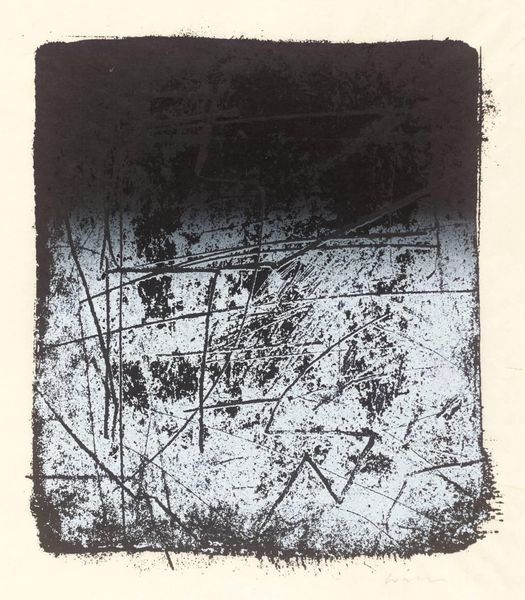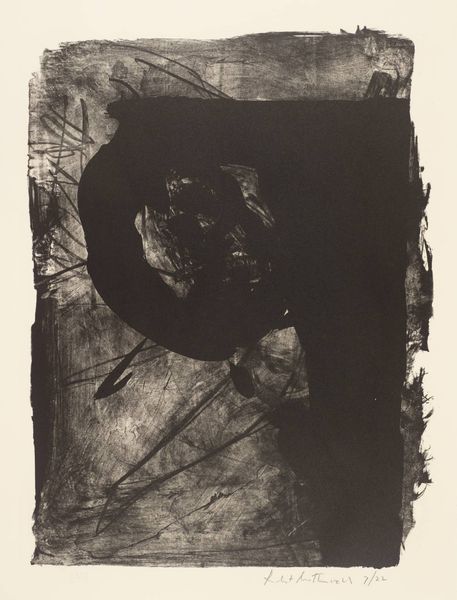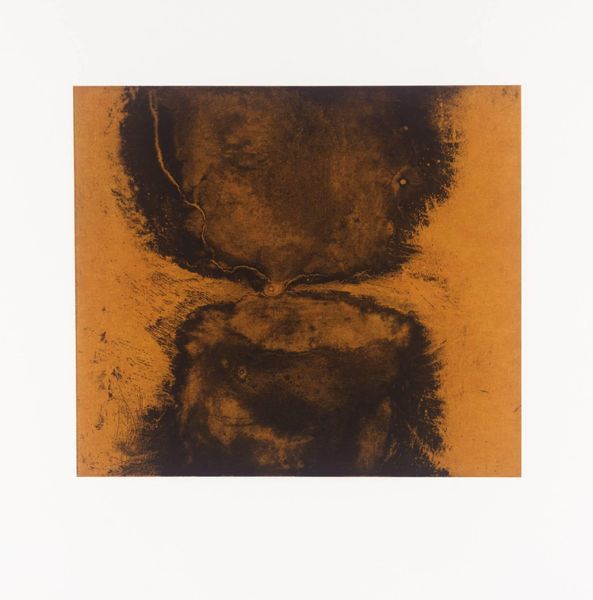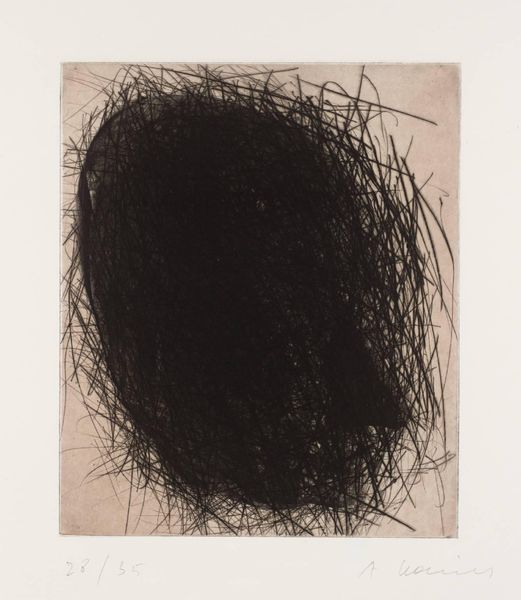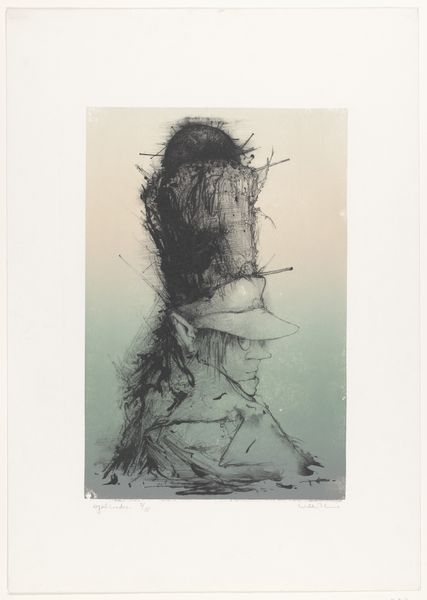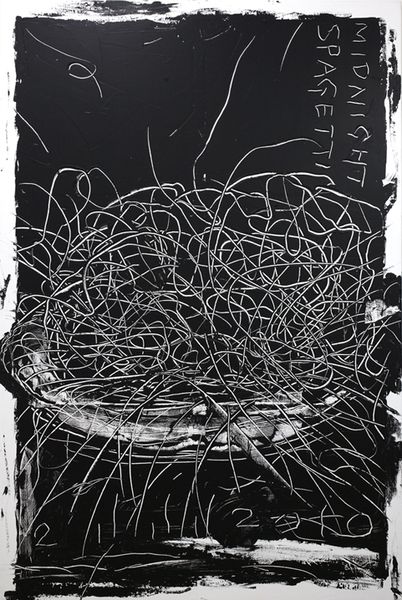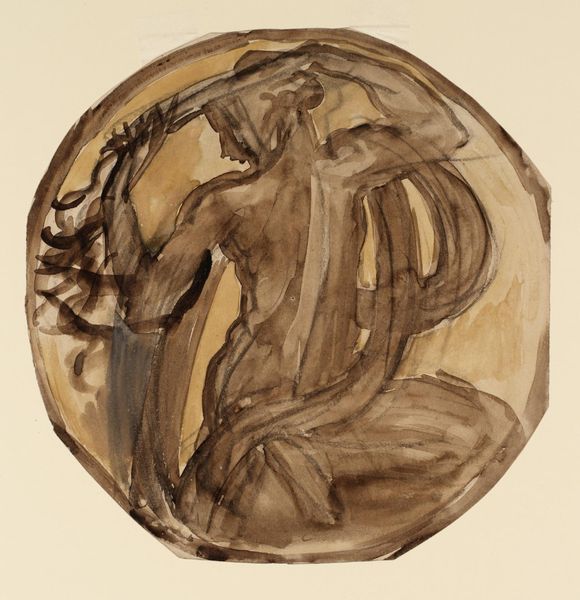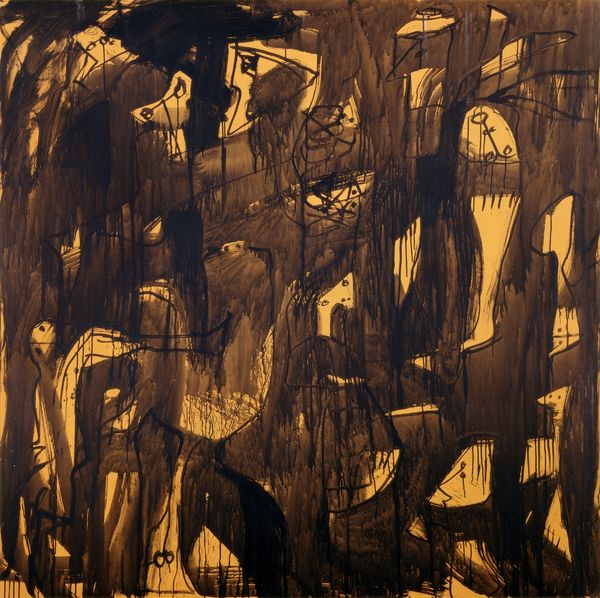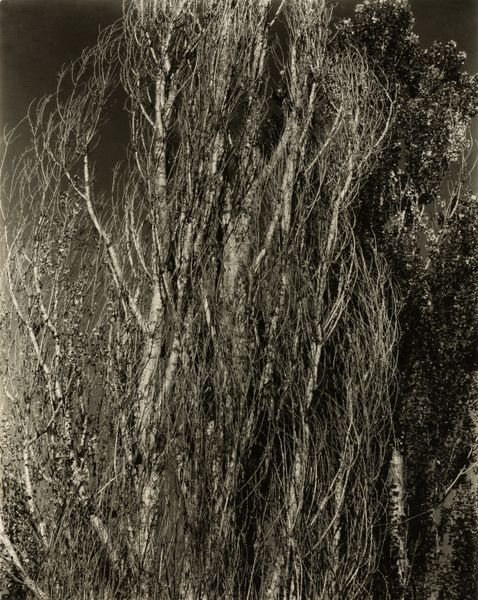
painting, oil-paint
#
painting
#
oil-paint
#
form
#
matter-painting
#
abstraction
Copyright: © The Historical Museum in Sanok (Poland) is the exclusive owner of copyrights of Zdzisław Beksiński's works.
Curator: Let's turn our attention to this circular painting, an "Untitled" piece by Zdzislaw Beksinski. It’s rendered with oil paints and leans heavily into abstraction and matter painting, presenting form as its primary focus. What springs to mind for you? Editor: Well, immediately I think of roots. Not neatly buried and anchoring a tree, but chaotic, exposed, maybe even reaching out like desperate tendrils. The color palette definitely lends a certain… unease. Curator: Indeed. The network of lines suggests both a natural structure, perhaps, as you suggest, roots or branches, but also something manufactured. In Jungian terms, it hints at a complex interweaving of the conscious and unconscious mind. Does the symbolism strike you as primarily organic? Editor: It's funny you say "manufactured" because, to me, there's something fossilized about it. As if we're looking at the remnants of some strange biological circuitry. All that raw umber and sienna against the golden ochre…It's the color of memory. Like old photographs, but for nightmares. Curator: Interesting. Beksinski, throughout his career, was notoriously cagey about interpreting his own work, which lends itself to that idea of individual psychological imprints coloring our experience of viewing his paintings. The roots or fossilized networks you perceive might say more about the viewer than the intent. What persistent motifs or archetypes might these conjure, culturally? Editor: That’s true! Perhaps the nervous system. The neural network as a reflection of our own anxiety in connecting with the world, or failing to. Considering his wider body of work and penchant for the macabre, the “unintentional” meaning probably skews dark. There’s also the potential link between nature and technology. We try to imitate nature but end up just with these frightening parodies. Curator: It certainly feels like a subversion. Despite his background in architecture and photography, he considered painting the truest form of self-expression, free from the constraints of capturing external reality. Perhaps he succeeded in manifesting his interior world rather explicitly, or perhaps he intended something different and our perception shapes the actual piece itself. Editor: That possibility makes viewing it an adventure, I think, though maybe not a soothing one! A trip through someone else's interior landscape… with a disquieting soundtrack.
Comments
No comments
Be the first to comment and join the conversation on the ultimate creative platform.
